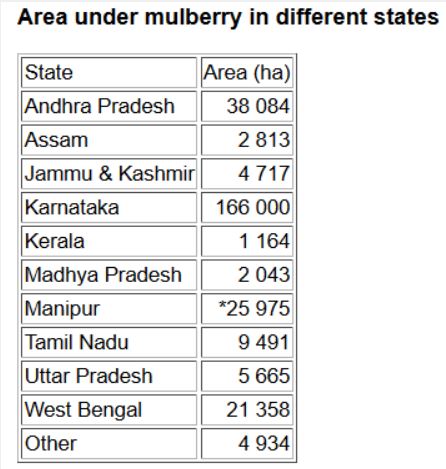Mulberry Cultivation in India
2020 MAR 12
Preliminary >
Agriculture > Allied areas > Cash crops

In news:
- Cocoon production in Karnataka, which had been hit by a mulberry disease, appears poised to pick up just in time to meet the growing demand for indigenous silk.
About Mulberry Cultivation
- Mulberry foliage is the only food for the silkworm (Bombyx mori) and is grown under varied climatic conditions ranging from temperate to tropical.
- Mulberry leaf is a major economic component in sericulture since the quality and quantity of leaf produced per unit area have a direct bearing on cocoon harvest.
- In India, most states have taken up sericulture as an important agro-industry with excellent results.
- The total area of mulberry in the country is around 2,82,244 ha.
About Mulberry:
- Mulberry is a fast-growing deciduous woody perennial plant. It has a deep root system.
- There are about 68 species of the genus Morus (Mulberry).
- Mulberry thrives under various climatic conditions ranging from temperate to tropical located north of the equator between 28° N and 55°N latitude.
- The ideal range of temperature is from 24 to 28°C.
- Mulberry grows well in places with an annual rainfall ranging from 600 to 2500 mm
PRELIMS QUESTION:
Q. Which of the following plant/tree species is associated with sericulture?
a. Eucalyptus
b. Oak
c. Mussaenda
d. Mulberry
Answer to Prelims question